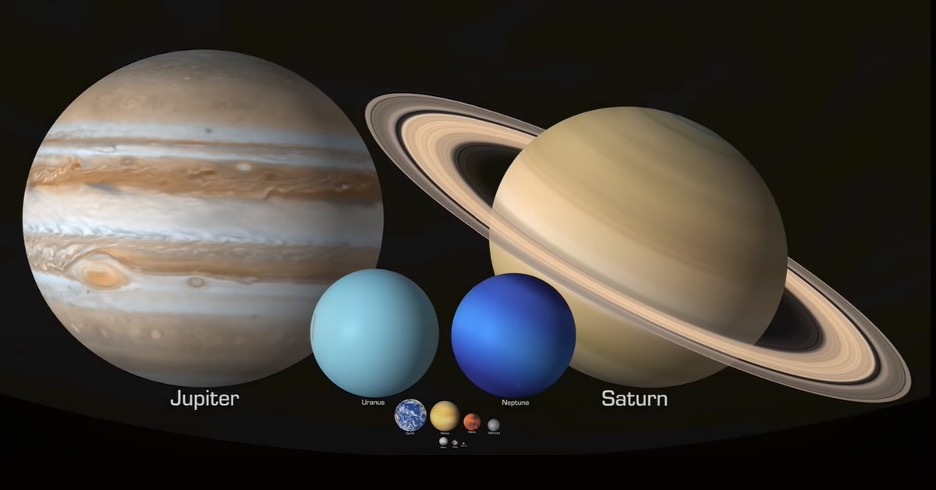An astronomical year for me ….When I was in the third grade I suddenly became very interested in everything astronomical – especially the planets of our local Solar System. That same year we studied the Solar System in public school, and that only added to my excitement over the topic. I began badgering my parents to buy me a telescope which they eventually did. My Christmas telescope was a 3” refracting Tasco brand telescope.
Although I don’t have much memory of what happened in public school, I do know that I was one of the very few that latched on to my latest love – the cosmos. I took things outside the classroom and into nightly practice under the dark skies of western Oregon. At the tender age of 8, I became a self-proclaimed amateur astronomer. Armed with my latest issue of Sky & Telescope magazine, I would march down to the lower field and look for the planets as indicated in the chart of the magazine.
The brightest star visible from earth is Sirius to the lower left of the constellation Orion. The planets Mercury, Venus, Mars and Jupiter, when at their brightest are all a great deal brighter than Sirius. They are beacons of the night sky. The ancients called them “Planets” which translates as “Wanderers” This is because they are constantly changing position in the night sky.
The inner solar system consists of Mercury, Venus, Earth and Mars. These are known as the rocky planets. The rocky planets are small and dense. The cores of these planets are composed of iron and other heavy elements. Each of the inner planets are less than one Earth mass. These planets are very bright because they are in close proximity to Earth (see Fig. 1)

The outer Solar System consists of Jupiter, Saturn, Uranus and Neptune. These are known as the giant planets. Weighing in at 300 earth masses, Jupiter is the largest planet in the Solar System. Saturn comes in second at 95 earth masses. Uranus and Neptune each contain around 15 earth masses (see Fig. 2).

Although it is very bright, Mercury is quite small and very close to the Sun making it hard to observe. It appears as a bright orange “star” in the sky just above the Sun at sunrise or sunset.
The blazing white light of Venus is pure beauty. Cloaked in an atmosphere rich in carbon dioxide and sulfuric acid, itreflects a great deal of the sunlight that impinges upon it making it very bright. Like Mercury, Venus is closer to the Sun than Earth and therefore has phases just like the moon.
Weighing in at one tenth of one Earth mass, Mars is a rather small planet. It gets very bright at opposition (or closest approach) but then recedes to appear like your average red star. Mars is farther out than Earth and therefore has no phases. The Mars signature is as a big bright red “star” when at opposition.
Jupiter, aka “King of the Gods” in Greek mythology, is a big and bright apparition shining in the eastern sky in the early evening when at opposition. Jupiter boasts of having many moons; the most notable are the four Galilean moons first recognized by Galileo in 1610. They make a good target for binocular astronomy.
Saturn, also known as the “Ringed planet” is a favorite with those who own telescopes and are able to observe the rings first-hand. Saturn is far away (10 times farther from the Sun than Earth) and looks like your average star but through a good telescope it delights with its beautiful ring structure.
Uranus and Neptune are very faint and so require a good pair of binoculars or decent amateur telescope to see. They both appear somewhat bluish.
The astronomical community has classified Pluto as a non-planet for three main reasons. The first reason is that it is very small, where only ice giants should form (Uranus and Neptune) The second reason is that its orbit is not in the plane of the ecliptic but is inclined by 17 degrees. Its orbit is also significantly elliptical rather than circular. For these reasons Pluto is not considered to be a major planet as say Earth or Jupiter, but rather a minor, or dwarf planet orbiting among the Kuiper Belt of myriad other icy dwarfs.
The mystique of comets inspires many astronomers to pull their telescopes out of moth balls and find a dark vantage spot to observe these periodic members of the solar system. Every year we have 4-5 comets entering the inner Solar System. For the most part they are usually small and not very observable. However, in 1997, we had the opportunity to see a very bright comet named Hale Bopp which was one of the best and brightest ever seen from Earth.
Astronomy is a wonderful family activity and keeping track of the motions of the planets is a great pastime. Each planet has a unique size and composition and has a unique visual signature in the night sky. For the experienced observer, one quick look will tell what planet is being viewed at any time.
________________________
William Stride is a peer specialist and independent author with a combined background in astrophysics and mental health counseling. A survivor of schizophrenia, Bill has written several articles and the book, Voices inside Me, that reflect on his personal journey of recovery.
